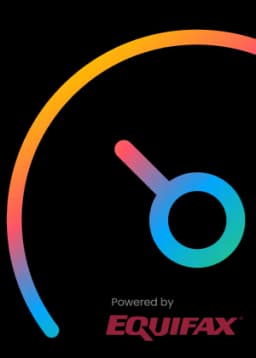Do you dream of stopping the 9 to 5 grind while you’re still young enough to enjoy all the best things in life? That’s what the “FIRE movement” is all about. Sure, it sounds cool, but what exactly are we talking about here?
FIRE stands for "Financial Independence, Retire Early," and it’s a strategy that helps people take charge of their finances with the ultimate goal of dropping their jobs. Instead of waiting until the age of 65 or older to retire, FIRE tries to make early retirement a real possibility.
FIRE followers stick to some simple rules: save a big chunk of your income, spend wisely, and invest it. The goal is to build up enough savings to cover living expenses way before you retire. This way, you can spend time doing whatever you want, whether it’s traveling or just enjoying more time with family and friends.
The core strategies of FIRE include saving a high percentage of your income, cutting down on expenses, and making smart investments to grow your cash.
What Is Financial Independence, Retire Early (FIRE)?
The main goal of a “FIRE lifestyle” is to get rich enough that you no longer need to rely on a job to cover your living expenses, meaning you can retire earlier. The whole point is to be smart with your money so that you can build up enough wealth to leave the workforce.
FIRE is all about choosing your finances before anything else. This means saving a large portion of your income, investing it in smart ways, and being very mindful about spending.
The goal is to grow your wealth enough to the point where work basically becomes optional, not necessary, while all your annual expenses are still covered. Then, you get to decide how you want to spend your free time.
Purpose and Principles of the FIRE Movement
If you’re aiming for FIRE, there are a few key principles that can really make a difference: saving a lot, investing smartly, and living frugally.
First, you need to save big. FIRE followers often save a large chunk of their income. Sometimes 50% or even more. It sounds ambitious, but the idea is to build up a solid nest egg as quickly as possible so you can start living on your own terms sooner rather than later.
But just saving isn’t enough. The FIRE movement is all about putting your money to work for you. That means investing aggressively in things like stocks, real estate, or other assets that can grow over time. The goal is to have your money growing steadily in the background, giving you more freedom down the road.
The last piece of the puzzle is living frugally. This doesn’t mean depriving yourself of things you love—it’s more about focusing on what truly matters to you. By cutting out the stuff you don’t need, you can save more and invest that extra money, bringing you closer to your financial goals faster.
How Does the FIRE Movement Work?
The FIRE movement might seem like a big dream, but it’s actually built on some pretty straightforward ideas. If you want to achieve financial independence and retire early, it all comes down to setting a clear savings goal, keeping your expenses in check, and making smart investments.
It’s not magic, just a mix of careful planning and dedication. Here are some of the key strategies that make FIRE possible and help bring that dream within reach.
The Rule of 25
The Rule of 25 is one of the most important parts of the FIRE movement. It helps you figure out how much money you need to save to be financially independent. Basically, the idea is that you need to have 25 times your annual expenses saved up. So, if you spend $40,000 a year, you’d need to save $1 million to reach your FIRE goal.
The 4% Rule
Once you’ve built up your savings, the 4% Rule helps you figure out how much you can safely take out each year so your money lasts for the long haul. The idea is simple: withdraw no more than 4% of your investments annually. By sticking to this rule, your savings can keep growing—even after you’ve stopped working. So, for example, if you’ve saved up $1 million, you could withdraw $40,000 a year.
The Right Savings Rate
Another key part of FIRE is having the right savings rate. This means saving as much of your income as you can. As tough as it can be, ideally 50% or even more is the goal here. The more you save, the faster you can reach your FIRE goal.
It’s not always easy, but by cutting out unnecessary expenses and being smart with your spending, you can save a lot more than you might think. The higher your savings rate, the quicker you’ll reach your "financial independence retire early" goal.
The Power of Compound Growth
When you invest, your money doesn’t just grow, it starts earning returns. That’s the magic of compounding, and over time, it can make your savings grow a lot faster than you might expect.
The earlier you start investing, the more powerful this compound growth becomes. That’s why investing wisely is such a big part of the FIRE movement. It helps your money grow, bringing you closer to your financial goals sooner.
By using these simple strategies—saving consistently, keeping expenses low, investing smartly, and taking advantage of compounding—the FIRE movement helps people achieve financial independence and retire much earlier than usual.
It’s all about being intentional with your money so you can live the life you want and enjoy an early retirement.
Variations of the FIRE Movement

FIRE Followers have different options to adjust their goals based on their lifestyle, needs, and what they want their future to look like. Here are some of them:
Lean FIRE
Lean FIRE is for those who want to live a simple, minimalist lifestyle while keeping their expenses low. The goal is to save enough to support a modest way of living, focusing on what truly matters.
To make Lean FIRE work, you’ll need to be pretty frugal. That means spending only on what you really need and cutting out the rest. It’s perfect for anyone comfortable with “living with less” and focusing on the essentials.
By keeping your costs down, you can reach your savings goals faster and enjoy the freedom that comes with financial independence.
Fat FIRE
Fat FIRE is the opposite of Lean FIRE. It’s for people who want financial independence but also want a higher standard of living. With Fat FIRE, you save enough money to afford more comforts and luxuries in life, even after you retire.
This means you need to save more and it might take a bit longer to reach your goal, but you’ll have more freedom to spend money on things you enjoy.
Barista FIRE
No, Barista FIRE isn’t the name of your next overpriced coffee drink! It’s a mix between full financial independence and still working a little bit. The idea is to save enough so you can retire early from a full-time job, but still work part-time for some extra income or benefits, like health insurance.
So why the name? Barista FIRE comes from the idea of working a job like a barista, but of course, you don’t need to work in a coffee shop as it can be any part-time role you enjoy.
Coast FIRE
Coast FIRE is for those who’ve saved enough money early on that they can just let their investments grow over time without adding more. The only thing you need to do now is let compound growth take care of the rest and put your finances on autopilot.
With Coast FIRE, you still need to work to cover your current expenses, but you don’t need to save as aggressively anymore because your investments should eventually grow enough to support you in retirement.
Limitations and Challenges of the FIRE Movement
The FIRE movement can sound like a dream. Retiring in your 30s or 40s, living life on your own terms, and having the financial freedom to do what you love. And while it’s definitely achievable, it’s important to remember that this path comes with its own challenges.
One big hurdle is the volatility of the market. If most of your money is invested and the stock market takes a dip, it can impact your savings and make it harder to stay financially secure after early retirement.
Also, saving such a huge chunk of your income means giving up on some luxuries - saying no to vacations or even little things like your music and video streaming services. Living frugally isn’t always easy, and it takes a lot of discipline.
Healthcare is another thing to think about. If you retire early, you might not have access to employer-provided health insurance, and private healthcare can be really expensive. These costs can eat into your savings fast.
And let’s be honest, life is unpredictable. Medical emergencies, inflation, or unexpected expenses can come out of nowhere. If you don’t plan for these surprises, you could find yourself running out of money sooner than you’d hoped.
The Benefits of Achieving FIRE
Achieving FIRE comes with some incredible benefits that go way beyond just retiring early (even if that IS a pretty sweet benefit). One of the biggest perks is freedom. When you’re financially independent, you’re no longer working just for the paycheck, you work because you want to. That’s what draws so many people to this goal: the ability to decide how you spend your time.
With FIRE, you also get the chance to pursue things you have a passion for. Maybe you’ve always dreamed of learning to paint, exploring new countries, or starting your own business. Without needing a 9-to-5 job, you have the time to do all those things you've always wanted.
If you still want to work, FIRE also gives you flexibility in your career choices. You might decide to take on a part-time role, try freelancing, or volunteer for a cause that’s close to your heart. The point is, you get to decide what your work life looks like, on your own terms.
Key Takeaways on Financial Independence, Retire Early (FIRE)
Remember, disciplined saving is the biggest component here. To reach financial independence, you need to save a significant part of your income—often much more than the usual 10% or 15%. This means living below your means and making smart choices about where your money goes.
Next, look into investing. Simply saving money in a bank won’t get you to FIRE; you need to make your money grow. This usually means investing in things like stocks or real estate, where your savings can build over time. But remember, with investments, there’s always some level of risk, so it’s important to have a strategy and be ready for ups and downs. Consider talking to a financial advisor for advice.
Planning is also key, but so is flexibility. Life doesn’t always go as planned. Markets change, unexpected expenses come up, and your priorities might shift. The most successful FIRE plans are the ones that can adapt.
In the end, FIRE isn’t just about quitting your job early. It’s about gaining control over your finances and creating a lifestyle that makes you happy. It’s about having the freedom to choose how you want to live each day, based on your own goals and dreams!











